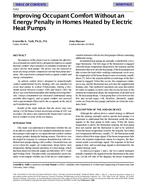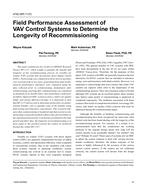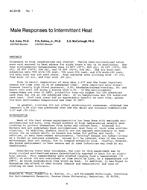Supermarkets are the most energy intensive buildings in the commercial sector, and are responsible for approximately 54.5 billion kWh of electricity annually. Refrigeration makes up half of this electricity use, with store temperature and humidity having a significant impact on this. Conditioned store air exchanges both moisture and heat with the refrigerated cases, and increases in store temperature and humidity impose higher loads on the refrigeration and cause sweating and frost.
Reducing the store humidity level has been shown previously to have a positive effect on the refrigerated case energy use, however dehumidification has an energy penalty on the HVAC system.
The project assessed the potential for energy savings due to humidity in supermarkets by optimizing the design and operation of the combined HVAC and refrigeration systems. The assessment included the effects of climate, space temperature and humidity setpoint controls, HVAC system and layout, and the design, operation and layout of the refrigerated cases.
EnergyPlus was used to model a typical store, and a fractional factorial analysis was conducted to analyze the effects and interactions of a selection of refrigeration and HVAC factors. The results showed that, contrary to initial expectations, the HVAC factors have relatively little influence over supermarket energy consumption. Refrigeration factors dominate supermarket energy issues, and changes to the HVAC design, zoning, or humidity setpoints of the supermarket have little influence. The refrigeration factors having the greatest influence are refrigeration capacity, case layout and lineup, and factors that affect the sensible and latent cooling effect of the cases on the store environment. Furthermore, the same refrigeration factors have a dominant influence on the HVAC system sizing and energy consumption. Unfortunately, the impact of HVAC design factors, including airflow rates, demand controlled ventilation, heat pipes, coil circuiting, and zone setpoints, result in store energy changes of less than 1%. While a small savings of a very large energy consumption may still be worthwhile, serious efforts to affect supermarket energy use should not focus on HVAC strategies.
Citation: ASHRAE Research
Product Details
- Published:
- 2015
- Number of Pages:
- 117
- Units of Measure:
- Dual
- File Size:
- 1 file , 4.7 MB
- Product Code(s):
- D-RP-1467


